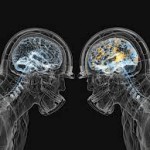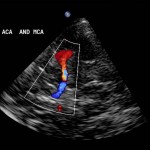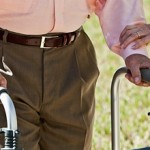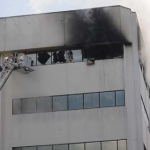Let’s start with a question which we will circle back to later: Have you ever turned red out of embarrassment, stuttered a bit around the person you had a crush on, or felt your hands tremble when you got excited or nervous? Keep that in mind, and let’s move on for now.
You respond with the fire department to a 30-year old female complaining of a seizure. Upon arrival you find the patient fully conscious, alert, verbal, lying on the kitchen floor, and flopping around like a fish. Inevitably, one of the responders is going to say the F word.
We’ve probably all heard it, thought it, or said it: “Stop fakingâ€.
If you been in EMS or emergency medicine for any period of time you’ve seen some pretty odd seizure presentations.
How many in EMS are content with rolling our eyes, labeling these patients as fakers, and dumping them off on the ER. We have a bit of a checkered history with the infamous ‘hold their hand over their face and drop it’ test and the ‘pseudo-medication saline flush’ test. But let me ask you this: What makes a patient “faking†a seizure any less of a patient? Chris Kaiser over at Life Under the Lights wrote a great article regarding EMS professionalism. If you haven’t read it, you need to.
We should cut ourselves some slack though: EMS education is woefully inadequate. We’ve indoctrinated medics on a few presentations of seizures and send them out into the field. When they encounter a presentation which doesn’t fit the cookie-cutter molds in EMS textbooks, we shouldn’t be surprised when they resort to the logic of it’s not what I was taught, so it must not be real.
But actually, we shouldn’t cut ourselves slack because we need to fix these issues in our education. Additionally, we need to hammer home that Psychogenic Non-Epileptic Seizures, Conversion Disorder, and Malingering are real, legitimate, psychiatric problems.
The brain is an organ just like any other.
The brain can break just as every organ, tissue, system, and cell on the body can.
When you mix the awe of being consciousness with a organ encased in a vault of bone and then subject all of that to the harsh realities of our existence, it’s no wonder we see some pretty strange things on the streets and in the emergency rooms.
Let’s take a quick look at psychogenic non-epileptic seizures (PNES), or what uses to be known as pseudo seizures (which is now considered a derogatory term). There is no lightening-storm of faulty electrical activity assaulting the brain. Instead, there is intense psychological stress and emotional trauma. It isn’t easily observed in a lab or duplicated in a rat and it doesn’t have a voltage-gated ion channel or biochemical pathway directly tied to it. None of that makes it any less real.
Perhaps it makes it more real. Patients and providers are both humans and humans break. We probably all carry emotional and psychological scars to some degree, except that ours hasn’t overwhelmed us. Some of our patients were born into terrible environments and have survived terrible things. Imagine everything you own, have, and love was suddenly taken away from you and you were forced onto the same streets you presently work. Maybe your brain would break too under all the stress.
We barely know how the brain works but we do know it can react very strangely to intense stress and emotional trauma. In the case of PNES, this bizarre activity is thought to be a coping mechanism. Very few things in medicine are for certain, but in this case basically 100% of patients with PNES will have an underlying psychiatric disorder. Of course we have to contend with malingerers stalking ER’s and on occasion we’ll run into a kid who doesn’t want to go to school.
Remember the question we started with? If you experienced any of those things or something similar, then you had a physical manifestation of an emotion. That ‘fake seizure’ patient? That’s a physical manifestation of an emotion too. It’s a normal response but sometimes it breaks and EMS and emergency medicine is in the business of providing excellent care to broken body parts and broken people. Let’s strike this particular F word from our vocabulary.










2 Comments
I appreciate your discussion of the PNES for patients who are not faking and have legitimate psychiatric disorders. But I must say in my career as a paramedic in an inner city, I had my share of patients who needed a meal and a warm place to sleep and found simulating a seizure to the best of their ability as the means to an end. I have no doubt that a homeless alcoholic may have psychiatric problems, but that was not the presenting problem.
I would like to see some science that can quantify the incidence of PNES and non PNES patients who present with “seizures.”
Me too, seen it been there done that got the t-shirt. Any paramedic with a decent amount of workyears on that bus can pick out a faker upon arrival, no need for parameters or tests, it’s clear. And yes, they need attention and care and all that, but not mine. I am a paramedic, i fix/stabilize ppl’s physical healthproblems not their mental problems. esp not in a busy night at 0400…..